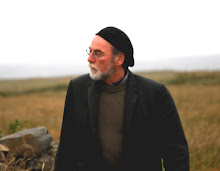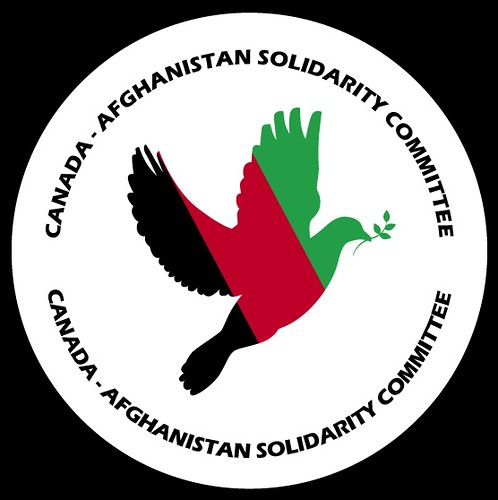Worth Celebrating
 Today is British Columbia's 150th birthday, but a day off around this time of year was a tradition in these parts long before we called it B.C. Day, owing to a custom begun by James and Amelia Douglas, our first governor and his missus. During the days of the American Civil War, an interregnum that caused Washington's covetous eyes to be occupied with other matters, Douglas made Emancipation Day – the August 1 commemoration of the prohibition of slavery in the British Dominions – a sort of a civic holiday here in the colony that would become a Canadian province in 1871.
Today is British Columbia's 150th birthday, but a day off around this time of year was a tradition in these parts long before we called it B.C. Day, owing to a custom begun by James and Amelia Douglas, our first governor and his missus. During the days of the American Civil War, an interregnum that caused Washington's covetous eyes to be occupied with other matters, Douglas made Emancipation Day – the August 1 commemoration of the prohibition of slavery in the British Dominions – a sort of a civic holiday here in the colony that would become a Canadian province in 1871.James was born in 1803 in the British colony of Berdice, now Guyana, on South America’s Caribbean coast. During his term of office, it was commonplace for posh diarists to refer to him as an "octoroon," since he was born a “free coloured” child of John Douglas, a Scottish trader, and Martha Ann Ritchie, a well-to-do Creole woman from Barbados. Lady Amelia was born in 1812 at Nelson House on the Burntwood River in northern Manitoba, the daughter of William Connolly, a French-speaking North West Company trader from an old Quebec-Irish family, and Miyo Nipy, a woman of the Swampy Cree Nation.
Given British Columbia's disgraceful reputation among Canada's provinces for its distinctly bloody-minded disregard for the rights of First Nations on this side of the Rockies, it is no small irony - and a thing routinely and conveniently forgotten - that the protection of the rights of aboriginal people was a key reason why the Colony of British Columbia was established in the first place.
It was in 1858 (in November, incidentally, not August) that Douglas, then Governor of the Crown Colony of Vancouver Island, travelled to Fort Langley, which was then "head office" of the British mercantile interests known collectively as New Caledonia, to formally declare the mainland territory West of the Rockies, south of Russian Alaska, and north of the 49th parallel, to be a new colony, to be known as British Columbia.
 It is worth remembering the immediate context, the thing so routinely forgotten: In the weeks preceding Douglas' arrival at Fort Langley, on the lower reaches of the Fraser River, thousands of American gold miners had poured north across the 49th and had immediately begun their grisly habit of slaughtering aboriginal people by the score. The “King George Indians,” as the tribes once proudly called themselves, fought back. In the space of a few days during the summer and fall of 1858, roughly 60 headless American corpses were observed floating down the Fraser River past Fort Langley. The Americans had met rather stiff resistance upriver, among the N'laka'pamux people. Douglas - the highest-ranking colonial official west of Rupert's Land at the time, declined American entreaties for assistance, and outright refused to intervene on their behalf. The Yanks were, after all, murdering British subjects. That's what you get, lads.
It is worth remembering the immediate context, the thing so routinely forgotten: In the weeks preceding Douglas' arrival at Fort Langley, on the lower reaches of the Fraser River, thousands of American gold miners had poured north across the 49th and had immediately begun their grisly habit of slaughtering aboriginal people by the score. The “King George Indians,” as the tribes once proudly called themselves, fought back. In the space of a few days during the summer and fall of 1858, roughly 60 headless American corpses were observed floating down the Fraser River past Fort Langley. The Americans had met rather stiff resistance upriver, among the N'laka'pamux people. Douglas - the highest-ranking colonial official west of Rupert's Land at the time, declined American entreaties for assistance, and outright refused to intervene on their behalf. The Yanks were, after all, murdering British subjects. That's what you get, lads.It is also worth remembering the historical and geopolitical context: A decade earlier, James and Amelia were among several hundred Hawaiians, Orkney Islanders, Lowland Scots, Iroquois, Métis, and uncounted tribal allies, who were forced to flee north from the Columbia River mouth to Vancouver Island, as a result of a typical British sellout - Westminster had granted America sovereignty over everything from the Lower Columbia to the 49th parallel. As the loyalists fled north, the American bloodbath began: The Cayuse War of 1848, the Klamath and Salmon River Indian Wars of 1855, the Yakima War of 1855, the Nisqually massacres of 1856, and so on.
Another thing worth remembering is the welcome Douglas gave to African-American farmers and merchants (during the U.S. Civil War, a second wave of American miners poured north, bound for the Cariboo country). Douglas saw to it that as soon as the miners disembarked in Victoria, the first thing they noticed was the all-black “African Rifles,” a Victoria militia. Further to his and Amelia's great credit, in 1867, when Canadians were celebrating the birth of their country (which we'd join four years later), the Douglas family was celebrating the first successful aboriginal-rights case in Canada’s history. A Quebec court ruling, when Canada was only a week old, upheld the legitimacy of the marriage of a couple whose vows had been consecrated according to Cree customary law. That couple was William Connolly and Miyo Nipy, Amelia's parents.
So here's a toast to Amelia, whose contentment could be secured by occasional small gifts of bitterroot, camas and buffalo tongue, and to James, later Sir James Douglas, Knight Commander of the Bath, who walked away from the establishment’s Anglican Church in Victoria at the height of the Anglican ascendancy's powers in the colony, and who earned the undying respect of tens of thousands of aboriginal people for the role he played in forcing an end to slavery among the tribes. Here's to both of them, for pulling their daughters from a Catholic convent school when the nuns told the girls they were not permitted to dance.
Slainte, James and Amelia: Your successors, today, are Steven and Gwendolyn Point. Steven is a Grand Chief of the Sto:lo Nation, a former Chief Commissioner with the B.C. Treaty Commission, and a former logger. The year Steven Point was born, Indians weren't even allowed to vote (I've written a profile of Hizzonner Steve coming up in September's Vancouver Magazine).
Recommended reading: John Adams' Old Square Toes and His Lady, for an affectionate biographical portrait of James and Amelia. For an innovative and thorough account of the way the British naval class, American financiers, High Church windbags and other assorted bigots pulled apart the proletarian, mixed-race and democratic society that was emerging in British Columbia at the eclipse of the ancien regime, see Adele Perry's On the Edge of Empire: Gender, Race and the Making of British Columbia.





7 Comments:
Nice. Thank you for putting it in a fair statement of equality.
Thanks Kurt.
I thought I might have been a bit hard on the Yanks, but they were bastards back then. Behaved better viz aboriginal people than we did, much later on (Boldt decision, etc.), to be fair.
Took in the 150th down in the harbour tonight. I hear about 160,000 people were there; concert on the steps of the legislature, didn't stay for the fireworks, though.
great post
Now we just need to complete the historical picture by getting the Pre-Contact history of the Aboriginal inhabitants on the record as well . . . which tribes waged war on other tribes, who profited from the inter-tribe slave trade, if apologies were ever made and reparations ever paid etc.
Truth, after all, is truth. Politically correct or not.
Terry, why has your blog been attracting so many pricks lately?
Excellent post, mind you.
Graeme, Fred has a good point. Archaeological, linguistic and written records show that the Americas prior to European settlement, and even pre-Columbian, were not an idyllic la la land any more than any other place on the planet. No one comes through history without some blood on their hands. Pacific Coast tribes were slave holders. The Cherokee in the southern US also owned African slaves. War and conquest between the original inhabitants certainly wasn't invented after 1492.
I'm not sure Graeme was referring to Fred, but if so, Louise has made a good point, but I would disabuse Fred (if he indeed holds to the notion) of the idea that the historical picture is not as complete as it can be in these matters.
It's certainly true that the "noble savage" idea that has animated so much of the discourse on aboriginal issues has resulted in understandings that are ahistorical, absurd, and in some cases, every bit as racist as its Hobbesian counterpart. But this has only served to divert attention from what is in fact "on the record" about life in the "New World" before colonial times.
And in many parts of Canada, slavery, warfare and savagery were routine. It would not be an exaggeration to say that the place was every bit as bloody as Europe has been for the past millennium. That much is definitely "on the record," and one of the main reasons why the forces of the Crown were so warmly welcomed by aboriginal people at Fort Langley, Fort Victoria, and other such places, was that the Crown forces (Metis, Orkney Islanders, Hawaiians and so on) quickly proved to be stout allies against the marauding "northern tribes".
Post a Comment
<< Home